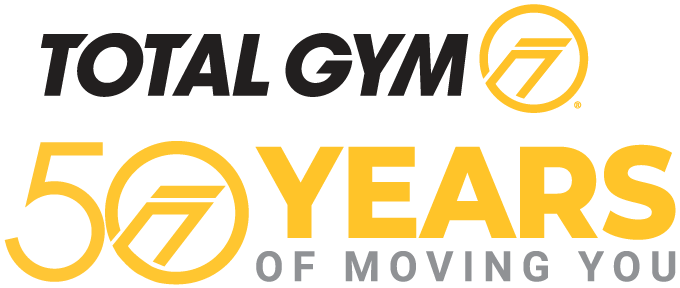News
Total Gym Strength Training for the Over 40s
Understanding Your Demographic – Teaching Total Gym Strength Training to Your 40+ Clients
We all know that as we age our body changes, and the need for strength training and overall fitness becomes ever more important for a higher quality of life and long term durability. But as a fitness professional, we do not always understand this concept to most effectively service our over 40 clients.
5 components of wellness for the 40+ age group
A comprehensive program for overall wellness in our 40+ clients should include:
- Strength training
- Cardiovascular training
- Mobility (increasing range of motion)
- Nutrition
- Supplementation
As a 40+ person myself, I can speak from personal experience that ALL those areas are important, not just one or two. Here’s why:
The body drops muscle mass at a rate of 1% per year after the age of 40, so the need to create and implement an overall strength training program is vital to support the kinetic chain and maintain muscle on a person’s frame.
Why Strength Training Works
To feel strong physically transfers over into all parts of life. Endorphins released after training can boost self esteem, self confidence and an overall feeling of well being. Performing daily tasks becomes easier and doesn’t require as much energy compared to someone who does not strength train.
Best Total Gym Strength Training Exercises
I will focus on 7 primary movements as a foundation for the strength program on a Total Gym machine. They include plank, hinge, pull, push, rotate, squat and lunge. Plank and hinge are not specific exercises, but rather are the foundation for the major strength movements for the program. Plank – this is the foundation for all movements. Hinge – the ability to flex and extend at the spine is vital to safe and efficient movement and also to avoid injury.
Reps and sets – all exercises- 3 sets with a reverse pyramid design of 5/6/8 reps. Drop 10% of the weight for consecutive sets.
See video for demonstration.

Squat – The position offers partial weight bearing closed chain exercises as well as dynamic cable exercises for both upper and lower body muscle groups. The incline plane provides optimal intensity levels to develop power in the lower extremities with closed kinetic chain plyo-metric exercises.

Pull Up – The LAT bars are used to provide partial weight bearing exercises for the back, shoulders and arms. This allows any client to perform a pull up exercises. The lower intensity is also ideal for developing power in the upper body by incorporating plyo-metric exercise variations.

Chest Press – This position provides training and conditioning of the anterior shoulders, chest and arms. Trunk stabilization is integrated into the exercises, as the upper body is upright and unsupported.

Inverted Shoulder Press – This position provides training and conditioning for the shoulders, arms and trunk. With the inverted body position, the degree of incline will inversely affect the strength and stability components of the plank and push up exercises. A lower incline emphasizes proximal stability whereas a higher incline emphasizes upper body strength.

Seated Lateral Shoulder (Cable) Rotation – This position provides training and conditioning of the truck, shoulders, chest and arms. The line of pull provides a transverse plane resistance with a constant challenge to lateral trunk stability.
Lunges with external weight (med ball, dumbbells, kettle bells). – This position provides functional stability and balance challenges to the entire body while strengthening and conditioning the lower body.
Knowing your clients’ needs and wants is vital to helping people achieve their fitness goals. Staying true to the initial intent and purpose of a workout program will sustain a client/trainer relationship and provide results for the client.
With the 40+ age group, keeping that perspective in mind is the best way to being an effective and trustworthy fitness professional.
About the Author

Neil Mallinson is a Master GRAVITY Instructor, Master TRX Instructor and holds numerous certifications through NSCA and NASM, and has presented domestically and internationally for decades.
He studied Kinesiology and Sports Medicine at the University of Maryland College Park and specializes in sports performance training with a focus on mobility and recovery. The ability to change a person’s life through fitness education and living a healthy lifestyle are what keeps Neil passionate.

